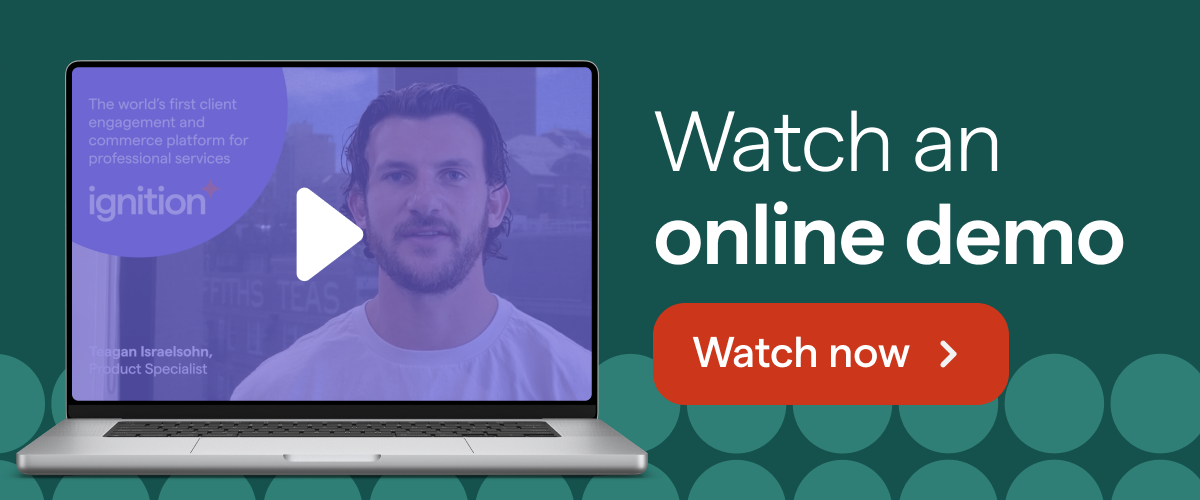The ideal customer profile (ICP) for accountants

From time immemorial, business owners have grumbled about ‘bad’ customers.
But as cathartic as venting can be, it’s not a strategy to grow a profitable accounting practice. Identifying your ideal customer profile helps you focus your marketing efforts and improve customer satisfaction. Savvy entrepreneurs adopt a strategic approach to client selection, aiming to attract and retain clients based on an ideal client profile (ICP) that aligns with their business goals. This customer profile serves as a cornerstone for developing targeted marketing strategies and building a solid customer base of ‘ideal clients.’ As part of this, shrewd firms also want to draw on data-driven insights to understand their ideal customers’ needs and preferences.
By increasing the number of ideal clients you service, you're not only ensuring a smoother operation, but also bolstering your potential for growth and profitability. Understanding the characteristics of an ideal customer is crucial, as it can guide your business practices and communication strategies.
Read on to learn more about how developing an ICP can transform your business approach and lead to a more prosperous accounting practice.
Listen to this article:
Mastering ICP marketing for your accounting firm
Understanding and catering to your ICP can be transformative for any business, especially in the competitive field of accounting. Your ideal customers are those who generate the maximum amount of profit with a minimal amount of hassle.
If the concept of an ICP is new to you, you’re not alone. Many practices overlook this crucial strategy. The good news is that you can quickly identify your practice’s ICP if you’re willing to invest a little time and effort into the process (see below). The even better news is that creating this ICP will almost certainly boost your practice’s bottom line by more effectively targeting lucrative clients while steering clear of unprofitable ones.
According to Gartner, adept ICP marketing can lead to outstanding business outcomes, such as shorter sales cycles, improved conversion rates, and increased average annual contract value (ACV) and customer lifetime value (LTV).
Think of it as applying the Pareto principle, also known as the 80/20 rule. By letting go of the 20% of clients who take up excessive resources for little return, you can focus on the top 80% who contribute most to your firm's success without requiring constant attention.
Adriaan Basson, founder of South African firm Wingman Accounting, has observed, “You can really accelerate your growth by being ultra-selective on who you let through the gate… The 80/20 principle is true – I’ve found that you always end up spending a whole lot more time on the clients that you don’t love working with and that don’t really bring you much revenue.”
Defining the ICP for strategic business marketing
You’re likely familiar with various business marketing strategies, but the concept of an ICP may be new territory. You may imagine creating an ICP involves determining what your practice’s total addressable market is and then working back to identify a target market and then constructing “buyer persona.” But it involves taking a deeper dive into what makes your most valuable customers tick.
There’s an overlap between traditional marketing and the nuanced ICP marketing approach, but there are also some differences. ICP marketing focuses on businesses that stand to gain the most from your services, whereas other forms of marketing such as persona-based marketing, focuses on individual decision-makers within an organization.
As this article from Qualtrics puts it, “Your Ideal Customer Profile describes the company that your buyer persona works for. So, let’s imagine that you sell vehicle fleets to hospitality businesses. If your ICP is a chain of hotels, one of your buyer personas might be the operational manager for that chain.”
Persona-based marketing is more of an art than a science. In contrast, creating an ICP is a data-driven exercise. As marketing expert Tom Scearce says, “The ideal customer profile (ICP) defines the firmographic, environmental and behavioral attributes of accounts that are expected to become a company’s most valuable customers. It is developed through both qualitative and quantitative analyses, and may optionally be informed by predictive analytics software.”

Crafting your ICP using a proven template
There’s no right or wrong way to identify your business’s ideal clients. But you’re likely to get the best outcomes if you round up any colleagues who might have something valuable to contribute and work through a list of questions about the characteristics of your business and the characteristics of businesses it is best suited to working with.
This Qualtrics ideal client worksheet suggests the following three-step ICP development process:
- Figure out what your practice does best. What is your unique selling point (USP)? Who is your customer base? What attracted the existing customer base? (Competitive pricing? Quality? Niche market position?)
- Identify your practice’s ‘good enough’ customers. Be warned, your ‘good’ customers – the ones who are friendly, or undemanding, or flush with cash – may not align with your ICP. Nonetheless, you and your colleagues will be able to identify the type of customers in the running to be ideal clients and those (late payers and time-wasters) who aren’t. Consider your practice’s ‘good enough’ customers and determine whether they have common traits. For instance, does everyone at your practice find it easier working with mid-sized businesses than with small ones, or vice versa?
- Fine-tune your client profile. Once you’ve got a broad idea of who might be ideal clients for your practice, it’s time to clarify your ICP by referring to an ideal customer profile template and posing questions such as the following:
- What industry do they (that is, your ideal customer) operate in?
- Where are they based?
- What’s their annual revenue?
- What’s their budget for accounting services?
- Do they need one-off solutions or ongoing support?
- What solutions are they most likely to buy?
- What are their biggest pain points?
- How can your solution help?
- What are their corporate values?
- What technology do they use?
- How many employees do they have?
- How large is their customer base?
By answering these questions, you can create an ICP that not only resonates with your business's expertise, but also targets the most promising prospects for long-term growth.
Identifying your ICP in a niche industry
Understanding who your customers are is key in crafting an ICP. For simplicity’s sake, let’s assume your practice’s ideal customer is a restaurant located in a CBD that turns over $10-$15 million a year and has 15-20 employees. The people who own these restaurants need expert help to (a) keep expenses under control, (b) manage cash flow and (c) effectively balance payroll.
Chances are, many of your practice’s current clients won’t fit neatly into the ICP. This isn’t something to be unduly concerned about. The goal is to progressively increase the number of ideal, or close-to-ideal, clients while deflecting and dispatching the far-from-ideal ones. Over time – and it will take time – your practice can become the ‘mid-sized city restaurant’ specialist.
By honing your ICP, your practice’s marketing should become much more cost-effective and efficient, because you can more precisely target potential customers. For instance, you can advertise solely in hospitality industry publications if you’re targeting restaurateurs. Plus, once your practice acquires more restaurant clients, it’s likely to benefit from word-of-mouth referrals when restaurateurs talk among themselves. To make the virtuous circle even more virtuous, rather than having to be jack-of-all-trades accountants, you and your staff can niche down and just provide the services restaurateurs need.
The worst-case scenario is that you’ll be able to charge the same amount for tasks you can now complete more efficiently. The best-case scenario is that you’ll be able to charge above-market rates for tasks you can complete faster than competitors because your practice is the ‘restaurant accounting specialist’.
Deflecting non-ideal clients is straightforward; you (honestly) tell them their business is unlikely to be a good fit with yours. Moving along existing non-ideal clients is a little trickier. The webinar below covers creating a respectful disengagement process in depth. But, to summarize, honesty is once again the best policy. You can inform non-ideal clients they are no longer a good fit for your business and refer them to practices that are a better match. Alternatively, you may want to allow them to remain a client as long as they are willing to pay extra to fit your processes and style of business.
(While we are on the topic of potentially unpleasant conversations, it’s worth being aware of the costs of putting off these chats. The State of client engagement report conducted by Ignition in Australia, the UK and the US showed a significant proportion of accountants had suffered financial consequences due to delaying or avoiding awkward client conversations.)
Fortunately, it’s possible to largely automate both onboarding new clients and ‘offboarding’ old ones. You can use industry-vetted proposal and engagement letter templates for onboarding and also create an ‘it’s not you, it’s us’ letter template to break up with clients outside your ICP.
Beyond the launch: Why your ICP demands continuous optimization
You can’t simply put together an ICP, run some well-targeted ads and then expect revenue to skyrocket. As the previously mentioned Tom Scearce explains, an ICP has to be revered as “a critical, strategic document that guides downstream efforts”. It needs to be a document that can align “marketing, sales, service and executive teams to the highest-value accounts”, increase the “focus on scalable and repeatable strategies and tactics to engage and convert top accounts” and drive “target account list creation, segmentation, organizational structure and other key activities”.
Your practice’s current ideal client may not be its ideal client in 18 months time. (Remote working might empty CBDs or an economic downturn may mean people start eating out less.) So, it’s essential to keep an eye on the metrics (for example, cost of acquisition, deal cycle time, churn) that indicate whether your ideal customer is continuing to provide an impressive return on investment (ROI).
Leveraging Big Data for enhanced ICP marketing
ICP marketing is a logical outgrowth of the Big Data era. After all, identifying the characteristics of an ideal customer is much easier when you have vast amounts of information about all your customers readily available.
But ICP marketing is also what successful businesspeople have, consciously or otherwise, always done – expertly target high-margin clients while avoiding low-margin ones. If data analytics could substantially increase the number of high-margin clients your practice attracts, wouldn’t you consider that as a worthwhile exercise?
For more information on how Ignition, the leading revenue generation platform for accounting and professional services, watch our online demo.



